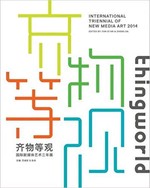The Performative Body-Mapping (PBM) method develops a novel approach to designing social, non-humanlike robots, which tackles the ‘correspondence problem’ in demonstration learning by harnessing dancers’ movement expertise and taking advantage of their ability to embody unfamiliar forms. Motion capture of performers inhabiting costumes that resemble robots provides the necessary data to bootstrap a machine learning process, allowing non-humanlike robots to learn how to move in ways that are readable to humans. Current research is exploring the combination of movement models learned using PBM with intrinsically motivated machine learning to support the improvisation of human readable movements, expanding the expressive range of non- anthropomorphic social robots.
Creative Robotics
Publications
Exploring Social Co-Presence Through Movement in Human Robot Encounters
This paper explores the social capacity of robots as an emergent phenomenon of the exchange between humans and robots, rather than an …
Performative Body Mapping: A Creative Robotics Method for Learning Expressive Movement
Performative Body Mapping is a method for harnessing the embodied expertise of dancers to inform the design, movement and behaviour of …
Human-Robot Kinesthetics: Mediating Kinesthetic Experience for Designing Affective Non-humanlike Social Robots
This paper investigates how a non-humanlike, abstract robot can develop a social presence based on its capacity to move in delicate and …
Performative Body Mapping for Designing Expressive Robots
This paper explores the challenges and opportunities of skill acquisition for creative robotics, where the required knowledge is highly …
Movement Matters: How a Robot Becomes Body
This paper explores movement and its capacity for meaningmaking and eliciting affect in human-robot interaction. Bringing together …
Accomplice
As a triennial, international new media art exhibition is a brand academic program of National Art Museum of China, providing a …
Creative Machine Performance: Computational Creativity and Robotic Art
The invention of machine performers has a long tradition as a method of philosophically probing the nature of creativity. Robotic art …
Material Matters: Machine Agency and Performativity
This paper explores new forms of entanglement between human and nonhuman agents. In considering the performative potential of …
Other Ways of Knowing: Embodied Investigations of the Unstable, Slippery and Incomplete
One of the most curious characteristics of computing processes and the medium of the digital is that they evoke, reinforce, produce and …
Rethinking Machine Agency: From Cybernetic to Robotic Art
Starting from the premise that our idea of machines has expanded from questions of instrumentality to “a discourse of machine as acting …
On Track: A Slippery Mechanic-Robotic Performance
This article explores the production of ON TRACK, a performative installation, whose slippery, smelly narrative emerges from the …
